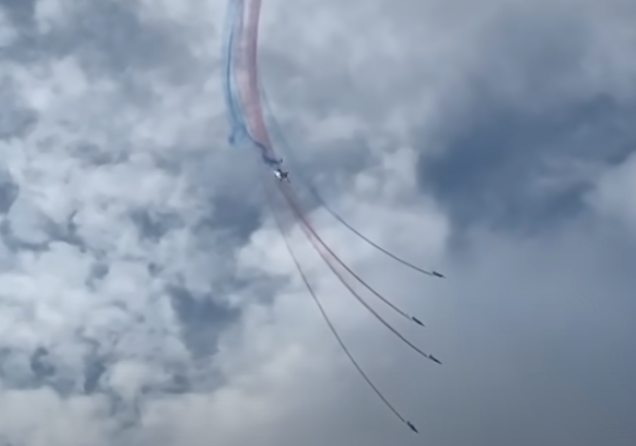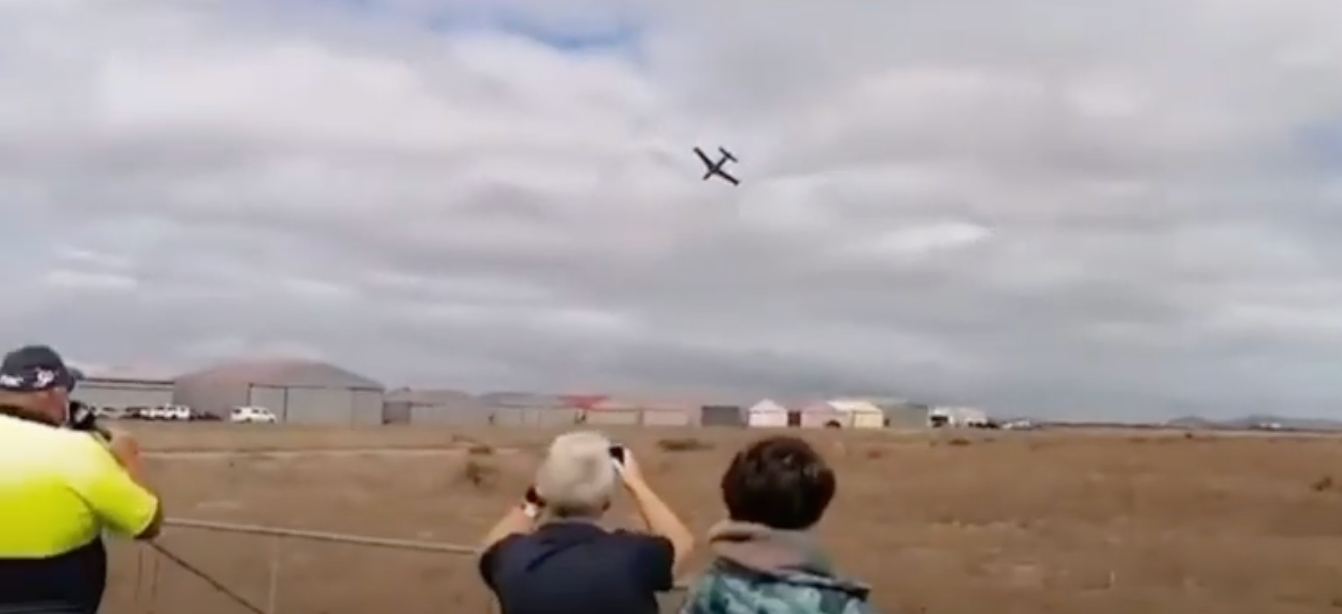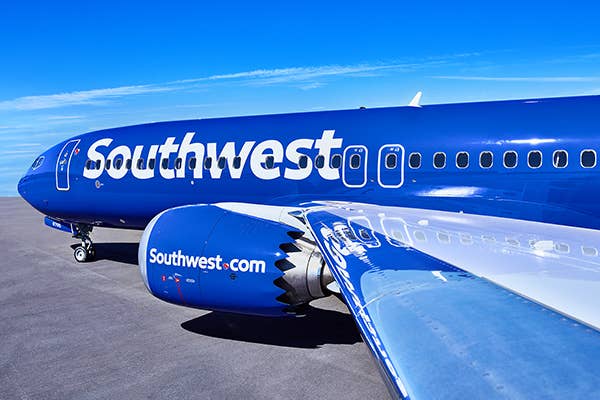Surviving the Flight — Review of Practical Risk Management for Pilots
Why do pilots make so many dumb mistakes? Probably because they’re not trained to aggressively identify and manage risk. This new interactive program from King Schools aims to change that, and AVweb’s Paul Bertorelli tried it out.
No doubt about it, pilots are a special breed.And after a day of reading accident reports -- which I do without fail at least once a month -- I sometimes suffer from the impression that they're highly motivated, well-trained, steely-eyed idiots. I'll concede that this is a cynical, over-the-top generalization but when you read about some Mensa candidate explaining how surprised he was to run a Cherokee off a short, snow-covered runway while landing with a 22-knot tailwind, the conclusion is not entirely outlandish.Secretly, I think John and Martha King would see the point, even though they are too polite to say so. The Kings -- in conjunction with insurance giant Avemco -- have recently released a CD-ROM program that goes to the heart of an ugly little truth in general aviation: We make a lot of dumb mistakes that bend metal and kill people unnecessarily. Although pilots cringe when they hear it, the vast majority of accidents are caused by poor pilot judgment or lack of proficiency and are no fault of the airplane. As famed cartoonist Walt Kelly put it through the voice of Pogo, we have met the enemy and he is us.In their new program, Practical Risk Management for Pilots, John and Martha King, the principals in King Schools, confront the perennial problem of teaching pilots to identify, evaluate and manage risk. In reality, it's not that hard to do but as the Kings point out, it's rarely if ever taught in GA training, probably because instructors don't have time and many may have only a vague understanding of evaluating risk themselves, never mind teaching someone else how to do it.In a nutshell, as the Kings do in this two-disc program, you manage risk by hanging some structure on it, just as the airlines and the military do. Standard operating procedures and clear, unambiguous guidelines are a starting place, followed by patterned thinking that leads to seeking out risk factors that wouldn't otherwise be obvious. In their risk-management program, the Kings do this with a series of checklist mnemonics.OK, fine. But really, aren't we getting into a touchy-feely area here, potentially seasoned with a pinch of psychobabble? And why spend the time doing such a course at all? How about up to a 10-percent discount off your insurance invoice? No kidding. In conjunction with Avemco, anyone who buys the course ($49), completes it and sends the certificate to the company is eligible for a 5-percent reduction in insurance premiums, plus another 5 percent for completing regular recurrency training. That's not a bad return on a couple of hours spent doing the course and there's one more payoff that's bigger: You could actually learn something that will save your hide.
The Big Lie
A few years ago, John King tossed a boulder into the quiet pond of general aviation safety and accident prevention by suggesting that the industry does a poor job of teaching pilots to confront an unpleasant truth: Flying light aircraft can be risky and you can kill yourself doing it. Indeed, the industry does itself a disservice by selling itself as an all-purpose transportation system that's an alternative to the airlines. Personally, I grow weary of articles in the aviation press touting the benefits of GA over the airlines or driving that completely gloss over the high cost, occasional hassle and, above all, the risk of GA flying.Despite the fact that the aviation press writes about aircraft accidents ad nauseam, aircraft owners tend to have an unrealistically rosy view of the hazards they face, what the Kings generally call the "big lie."Even experienced pilots, argue the Kings, often don't have a realistic assessment of flight risks and thus they expose themselves and their passengers to more risk than might be acceptable if they truly understood the odds. Inevitably, you have to throw numbers at this to grasp it fully and the Kings do that in this program by debunking the myth that the drive to the airport is the most hazardous part of any flight. While that's true if you're flying the airlines, the overall risk of being in a light aircraft accident is seven times greater than the risk of a car accident and 49 times greater than the chances of being involved in an airline crash.According to the King's research, the GA accident risk, on a per-mile basis, is about on par with motorcycles, a reality I suspect most pilots don't grasp, even the Honda and Beemer owners. Of course, those numbers apply to both industries in a broad-brush way. But it's well-known that in any risk group, there are segments that have substantially higher risk of accidents and those that have lower risk, by dint of skill, experience, proficiency and, above all, behavior. Practical Risk Management aims to teach pilots to be in that lower risk group, and the Kings argue that it can be done.
A Way of Thinking
For as bad as the GA accident rate is now, it used to be much worse. In the mid-1970s, the overall number of GA accidents topped 4000 a year while these days, total accidents hover around 2000 a year or less. If NTSB stats are accurate, both overall accident rates and fatal rates have declined markedly during the past two decades from an overall rate of 10.9/100,000 hours of flight in 1982 to 6.56/100,000 in 2001. Fatal rates have dropped from 1.99/100,000 to 1.22/100,000 during the same period.Obviously, that's a positive trend but the stark fact remains that GA is still far riskier than driving and barely in the same risk universe as the airlines. And as the Kings point out, fully 85 percent of accidents are caused by what they call "failure in risk management," which is another way of saying that something like 1700 of those 2000 accidents annually are completely and utterly avoidable if pilots would simply learn to identify the appropriate risks and reduce or manage them to acceptable levels.But how? In their risk-management program, the Kings explain a relatively simple approach that teaches a pilot to proactively look for potential risk in the way that an IA looks for trouble spots in an airframe during an annual inspection. After all, although the risks can be insidious and cumulative, they aren't exactly invisible if you're looking.To get the proactive risk search started, the Kings introduce a mnemonic of the sort we're all accustomed to in aviation. The memory jogger is PAVE, which breaks the risk into four categories widely accepted as having a bearing on accidents. PAVE stands for pilot, aircraft, environment and external pressure. You don't have to be a rocket scientist to understand how this simple system works. Before embarking on a flight, you merely interrogate yourself with regard to potential risks you as a pilot might represent, what aircraft anomalies might exist and whether the weather or external pressures -- get-home-itis -- may be factors. Theoretically, if you're honest with yourself, the risk elements will be self-evident.
Interactive Format
As do most King products, Practical Risk Management has an interactive format consisting of a series of brief -- about three minutes -- video lectures explaining a concept, followed by a series of simple interactive questions designed to reinforce the ideas discussed and to test knowledge. For purposes of qualifying for the Avemco discount certificate, the program has a simple tracking provision that forces you to complete all of the sections and to answer the questions correctly. Once you've done that, it places a green check mark next to the completed section and you move on to the next.Some of the material covered will be familiar to most pilots and, to a degree, obvious enough that you may ask yourself why you're suffering through it. For example, the IMSAFE mnemonic is used to vet the pilot for fitness for flight and although many of us may not use this checklist directly, we know by instinct not to fly when we're ill (the "I" in IMSAFE) or when taking certain medications, the "M." On the other hand, the accident record is well-populated with examples of pilots who came to grief because of one of the factors the IMSAFE mnemonic is intended to identify.
And on the other other hand, I was surprised to learn that I don't know as much as I think I do about both overall risk numbers and the nature of risk taking. A couple of the question sets on these subjects that seemed painfully obvious at first glance weren't obvious at all and I got the answers wrong. It took some noodling to review the lesson to get them right.For instance, in the world of risk management, it's understood that when the reward is high and the risk is vague and ill-defined, most people don't do a good job of analyzing the situation. The example the Kings give to illustrate this is three pilots confronted with three different scenarios.One is a 250-hour non-instrument-rated pilot about to embark upon a long cross country to attend a much-anticipated high school reunion. The weather is decent VFR but with a 40-percent chance of 800 feet broken and 2 miles visibility in rain.The second is a 420-hour instrument-rated pilot out for a Saturday-morning hamburger jaunt with an unrestricted VFR forecast for the entire day. The third pilot is a 120-hour non-instrument-rated pilot on a long cross-country. En route, she learns that an updated forecast calls for 500-foot ceilings and 1 1/4 mile of visibility.Which is the toughest decision? It not so obvious but it's scenario one, the 250-hour pilot. He's facing a high reward -- his reunion -- but a vague risk, the "maybe" forecast. It's easy to blow off a 40 percent chance of a weather risk you can't handle and many pilots do just that, since the leading cause of fatal accidents is VFR-into-IMC. You'd think by now that pilots would have figured out how to avoid this risk but it seems clear that we haven't.
CARE in the Air
Go/no-go decisions are one aspect of risk management but the other critical half of the equation is handling the novel situation en route; what to do when the weather sours or something unanticipated transpires. For this, the Kings have another mnemonic: CARE for consequences, alternatives, reality and, again, the effects of external pressure on decision-making.The Kings introduce a concept I had never thought about: As any given flight progresses, you usually have fewer options than you did at takeoff. You have less fuel, you're more fatigued, you may be flying into an area of fewer airports, the weather may be deteriorating -- in short, you have fewer resources to focus on your decision-making so the probability of making the wrong decision may increase at a time when you're confronted with decisions that carry the most serious consequences.Again, through a series of examples set out in brief video lectures with follow-up questions, Practical Risk Management gives you a simple structure to proactively find the risks and deal with them. In reality, you might not wish to adopt the King's approach in its entirely nor will you necessarily always agree with what they consider to be a significant risk. But in John King's view, the take-away value of this program is not so much to recognize the universal risk -- if such a thing exists -- but to develop a disciplined way of thinking about and dealing with things that you deem to be risky to you.In closing, I was impressed with this product. Although it doesn't close the book on risk assessment and judgment, it's certainly a groundbreaking effort at teaching what many instructors have simply thrown up their hands and ignored. Further, I commend the Kings for continually advancing the notion that GA flying can't be considered safe. Perhaps it can't even be considered relatively safe. But it can be done with acceptable risk and as long as everyone involved understands that, we're all better off. Practical Risk Management helps further that understanding and it's thus a worthy product for every pilot's training library.






